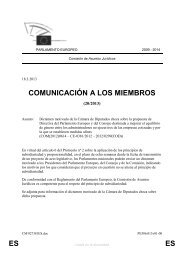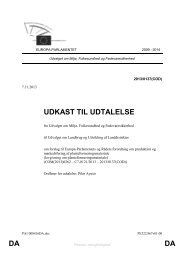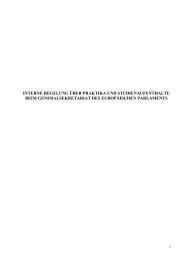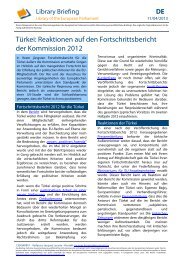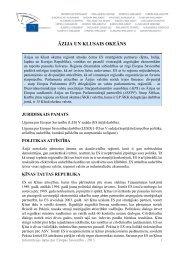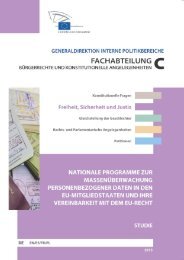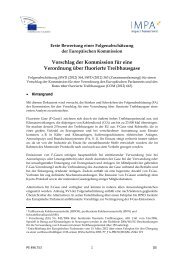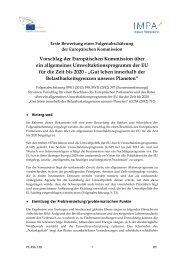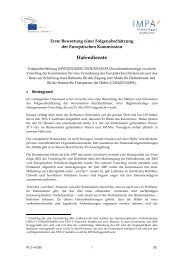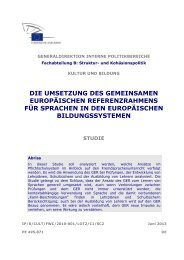Link to the study - European Parliament - Europa
Link to the study - European Parliament - Europa
Link to the study - European Parliament - Europa
You also want an ePaper? Increase the reach of your titles
YUMPU automatically turns print PDFs into web optimized ePapers that Google loves.
Nuclear Decommissioning: Management of Costs and Risks<br />
____________________________________________________________________________________________<br />
In its answer in <strong>the</strong> same document <strong>the</strong> <strong>European</strong> Commission did not address <strong>the</strong> named arguments<br />
(experimental technology, high investment costs), but explained, without going in<strong>to</strong> details, on <strong>the</strong><br />
potential purposes of <strong>the</strong> selected technology:<br />
'The plasma melting technology was <strong>the</strong> market response <strong>to</strong> <strong>the</strong> procurement process and was<br />
approved by <strong>the</strong> relevant safety authorities. The project is co-financed from national resources.<br />
Plasma melting technology can potentially serve many more purposes than traditional<br />
technologies.' (ECoA 2011)<br />
The answer says, in a simplified form:<br />
The 'procurement process' and <strong>the</strong> 'market' decided over which technology <strong>to</strong> prefer for that<br />
purpose.<br />
The regula<strong>to</strong>ry agency decides on <strong>the</strong> technology <strong>to</strong> use, this agency’s compliance decision is<br />
supporting <strong>the</strong> technology selection.<br />
It is in no way <strong>the</strong> managing organisation (in this case DP RAO) and its national control<br />
institutions (in this case MEE) that are finally responsible for this strategic decision.<br />
In order <strong>to</strong> understand this decision process additional background seems necessary.<br />
4.9.2. The basics: project rationale<br />
The project of installing a plasma oven at <strong>the</strong> Kozloduy NPP <strong>to</strong> treat LAW, which was in part<br />
generated during <strong>the</strong> operational phase and, in part, stems from decommissioning, is rationalized by<br />
<strong>the</strong> missing space for s<strong>to</strong>ring wastes at <strong>the</strong> site (EWN 2013b). Alternatives <strong>to</strong> this technology are not at<br />
all discussed nor evaluated in EWN 2013b.<br />
Waste treatment technologies<br />
During <strong>the</strong> operational phase of nuclear power plants operational wastes are generated and, if not<br />
treated, accumulate over <strong>the</strong> lifetime of <strong>the</strong> reac<strong>to</strong>r. These wastes are of very different types:<br />
Evaporation waste, majorly dissolved/crystallized contaminated boric acid from <strong>the</strong> partial<br />
evaporation of cooling water;<br />
Spent resins, organic plastic pellets with adsorbed contamination suspended in water;<br />
Decontamination liquids and cleaning <strong>to</strong>ols;<br />
Contaminated filters, protective clo<strong>the</strong>s and o<strong>the</strong>r materials;<br />
Removed/exchanged metal parts such as valves or pipes.<br />
If not treated, those wastes are s<strong>to</strong>red at <strong>the</strong> facility in tanks (liquids), barrels or containers (e.g. metal<br />
parts or filters) or vaults (reac<strong>to</strong>r internal or externally added).<br />
125




